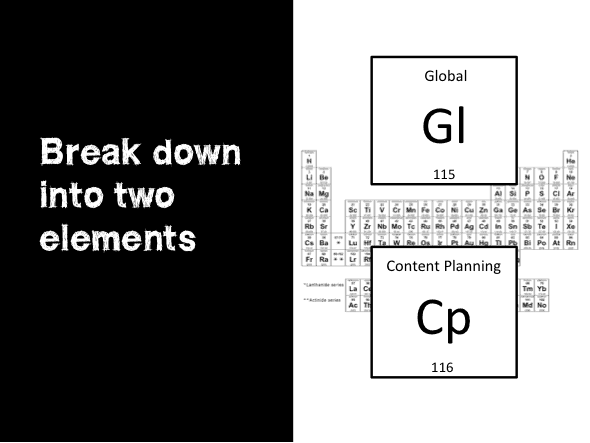Everyone who has studied marketing has been introduced to the 4 P’s of the Marketing Mix, which are Product, Promotion, Place, and Price. These 4 P’s were originally presented by E. Jerome McCarthy, an American marketing professor and the author of the influential textbook Basic Marketing: A Managerial Approach.
The 4P’s have served as the cornerstone of modern marketing for the past century. In a nutshell, the 4 P’s are the core concepts for creating the right product at the right price in the right place with an effective promotion.
The idea of 4 Ps of marketing has undergone expansion at various levels with more Ps added by many marketing gurus and experts. There is even a 4C concept floated. However, the 4Ps offer an effective platform for creating the basic marketing foundation.
Inspired by the 4 P’s, I create a new set of 4 P’s for global content marketing for my book, Global Content Marketing: Plan, Produce, Promote, and Perfect.
There are many challenges that marketers have to deal with while globalizing content. Global content marketing involves dealing with local language and culture which can prove to be tricky in some situations. Asian markets can be the perfect example where the homogeneous advantage that American markets offer is clearly missing. That’s why it is crucial to identify the challenges of scaling content globally, both internally and externally.
In content marketing, it is the words that evoke emotion. When language is a barrier, building emotional connections with your audience can pose more than basic challenges. Also, idioms that have a certain meaning in one country can have an entirely different meaning in another country.
Collaborate with relevant stakeholders on regional and country teams to create a global content marketing strategy that aligns target audiences, key success metrics, priority countries, and strategic editorial topics with your business objectives.
Alignment of objectives and strategy is vital because it dictates content creation, promotion, and measurement.
Also Read: But How Is Content Marketing Different From, Well, REGULAR Marketing?
Develop relevant stories that meet identified countries’ needs with different formats based on strategic editorial topics that address the target audience’s pain points, desires, and challenges.
Establish a market-driven content distribution process with paid and social media. Publish the appropriate formats of content with the optimal frequency in targeted channels. Use tools and data to optimize the media buy and social media content distribution.
Continuously optimize and measure the impact of content marketing as part of an ongoing feedback loop. Define goals and use tools and processes to maximize the effectiveness of content production and content syndication. This step’s goal is to improve the previous 3 P’s: Plan, Produce and Promote.
When we add the word ‘Global’ in front of ‘Content Marketing,’ it feels like an extra weight is put on our shoulders, but ‘Global’ doesn’t mean that we have to market to all countries.
Let’s break down ‘Global’ and ‘Content Marketing’ into two elements:

Global in this context simply means headquarters working together with local teams to prioritize target countries, audiences and allocate budget and resource accordingly.
By the way, ‘headquarters’ isn’t necessarily the main office. It’s a group of people with organization-wide responsibilities who are not focusing on specific local markets. Corporate persons can also reside in the local markets, but they are responsible for organization-wide activities. In smaller companies, marketing may wear both hats of managing organization-wide and local market responsibilities.
‘Local’ refers to regions or countries where the company has a local presence. Local presence does not necessarily mean the company has a physical office in a country. To be efficient and save money, some companies choose to handle an entire region out of a single central office, but regional marketing will assess each local market differently.
In today’s world, it’s no longer efficient to “Think globally, act locally.” For content marketing to scale to different countries effectively, we need to think and act both globally and locally.
In general, each company addresses global content marketing differently based on their organizational structures, budget allocations, corporate cultures, products, and services. Yet the 4 P’s of Global Content Marketing does not change. Global marketing requires close collaboration between the headquarters and local teams to achieve corporate goals. Once we understand what “global” means in this context, the weight on our shoulders doesn’t feel quite so heavy and we can see a clear path to globalize our content marketing efforts.